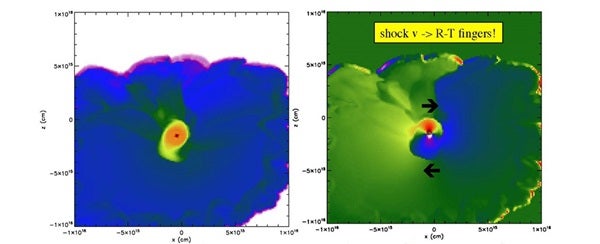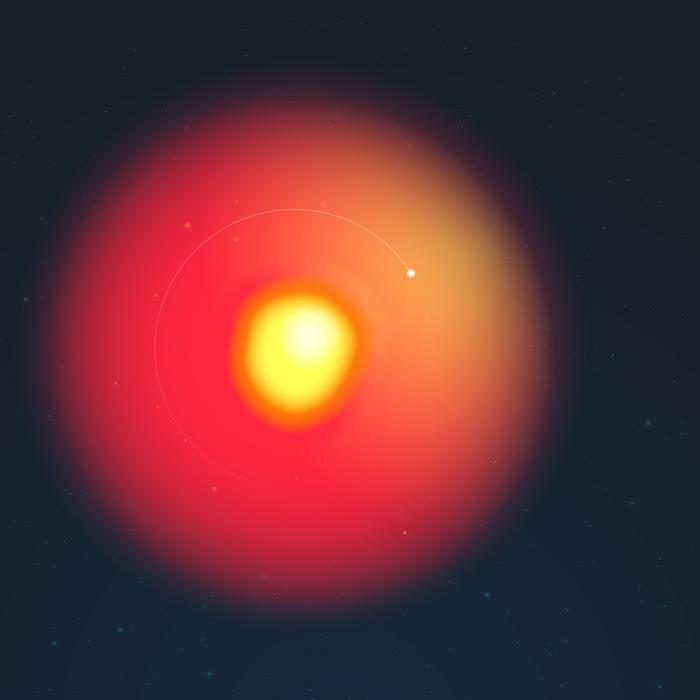For decades, it’s been hypothesized that our solar system’s genesis was initiated by a shock wave from a supernova. According to this theory, the wall of pressure formed by a shock wave from the exploding star smacked into a cloud of dust and gas, causing it to collapse and contract into the core of a new protostar — our Sun. This young Sun was surrounded by a rotating disk of dust and gas that eventually aggregated to form the planets of our solar system.
Boss and Keiser have explored this theory of cloud collapse — as opposed to a previous theory of shock wave-caused cloud shredding — using advanced 2-D and 3-D modeling for several years and have published a series of papers supporting it.
A crucial aspect of this line of research is the distribution of certain products of the explosion, called short-lived radioisotopes. Isotopes are versions of elements that contain the same number of protons but different numbers of neutrons. Specific isotopes were formed during the supernova’s explosion and distributed throughout the region that would eventually become our solar system before the isotopes had a chance to undergo radioactive decay. Their daughter products can be found today in samples of primitive meteorites.
Previous modeling work from Boss and Keiser demonstrated that a wave of pressure expanding out from a supernova’s explosion could have struck a gas cloud and formed little finger-like indentations in the cloud’s surface, which injected the short-lived radioisotopes into the collapsing ball of gas and dust that would eventually become our Sun and its planets.
The new modeling work from Boss and Keiser shows that this shock injection could have been responsible not only for the distribution of the isotopes now found in primitive meteorites, but also for the spin of our solar system. The angular momentum of the shock fingers appears to be what allowed the disk of gas and dust to form around the Sun, instead of collapsing into it.
“This was a complete surprise to me,” Boss said. “The very fact that a rotating disk formed around our proto-Sun may have been a result of the spin induced by this shock front. Without spin, the cloud disappears into the proto-Sun. With spin, a disk suitable for planet formation is created.”










